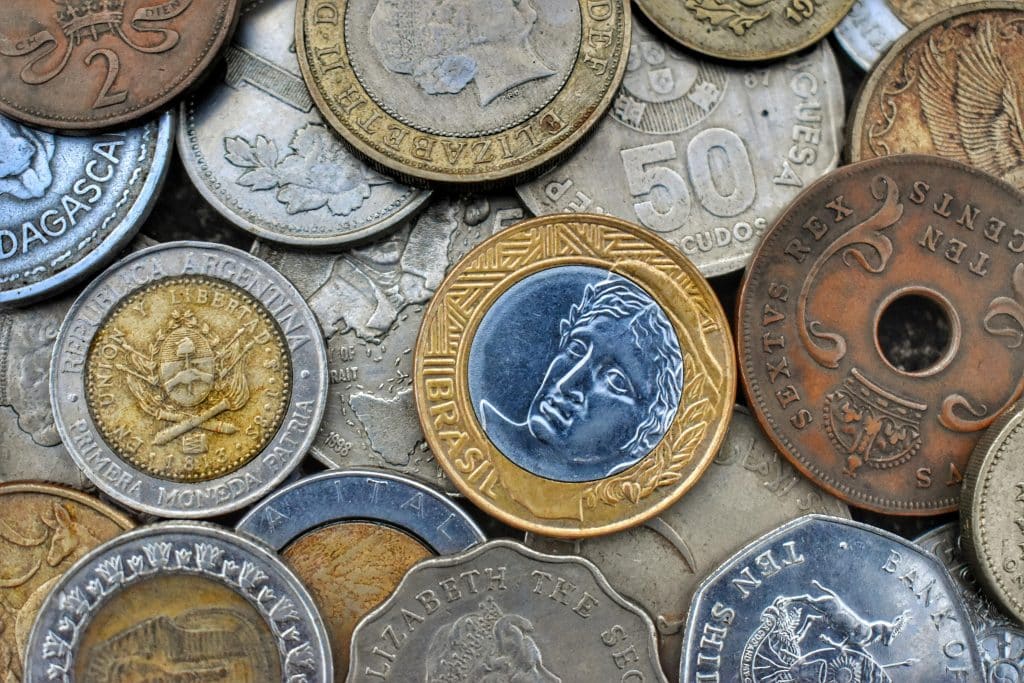
* Photo by Jitu Mondal: https://www.pexels.com/photo/collection-of-colorful-aged-metal-coins-with-engravings-4627668/
Discover the Fascinating World of Numismatics
Numismatics is the study or collection of currency, including coins, tokens, paper money, and related objects. It explores the history, production, and design of these items, offering a unique lens through which we can view the economic and cultural history of different societies. The term itself is derived from the Greek word ‘nomisma’, meaning coin, which signifies its primary focus on metallic currency.
Numismatics is a multidisciplinary field, intertwining history, art, economics, and metallurgy. Collectors and scholars within this domain examine the physical attributes of currency, such as inscriptions, imagery, and metal composition, as well as their socio-political context. For instance, coins often feature the likenesses of leaders and symbols of national identity, providing insights into the political landscape and cultural priorities of the issuing authority. Through numismatics, one can trace the evolution of trade, explore the impacts of inflation, and understand the technological advancements in minting techniques.
Moreover, numismatics is not confined to ancient or historical currencies. Contemporary numismatists also study modern coins and banknotes, focusing on their design, security features, and commemorative issues. This holistic approach ensures that numismatics remains a dynamic and evolving field, relevant to both historical scholarship and modern economic studies.
The History of Numismatics
The history of numismatics dates back to ancient civilizations where coins were used as a medium of exchange. The study and collection of coins began in earnest during the Renaissance, where wealthy patrons would collect coins from ancient Greece and Rome, appreciating them for their artistic and historical value. This early form of numismatic interest laid the foundation for a more systematic and scholarly approach that would develop in later centuries.
In the ancient world, coins served not just as currency but also as a means of propaganda. Rulers would mint coins bearing their own images or symbols of their reign to assert their authority and spread their influence. For example, Roman coins often depicted emperors and gods, encapsulating the divine right of rulers and the centrality of religion in governance. The intricate designs and inscriptions on these coins provide historians with valuable data about the political and religious sentiments of the era.
The Renaissance period saw the emergence of numismatics as a formal discipline. Wealthy collectors, often aristocrats or scholars, began amassing coin collections and writing treatises on their findings. These early numismatists were fascinated by the artistic merit of ancient coins and their ability to illuminate the past. Their collections and writings formed the bedrock of modern numismatic studies, highlighting the significance of coins as historical documents.
In the 19th and 20th centuries, numismatics evolved further with the establishment of professional organizations and societies dedicated to the study and preservation of currency. These institutions played a crucial role in standardizing practices, developing classification systems, and promoting public interest in numismatics. The advent of photography and later digital technologies revolutionized the field, making it easier to document and share discoveries. Today, numismatics continues to thrive, attracting a diverse community of collectors, historians, and enthusiasts who are united by their passion for currency and its stories.
Coin Collecting: A Popular Aspect of Numismatics
Coin collecting, a significant part of numismatics, involves the collection of various coins, often focusing on those that are rare or have historical significance. Collectors might seek coins from different countries, time periods, or those made of specific materials. This hobby, known as the “Hobby of Kings,” has been popular for centuries and remains a cherished pastime for many enthusiasts around the world.
One of the most appealing aspects of coin collecting is its accessibility. Unlike some hobbies that require significant financial investment or specialized knowledge, coin collecting can be enjoyed by anyone, regardless of age or budget. Beginners might start with coins found in circulation, such as commemorative quarters or foreign coins from travels, gradually building their collection and expertise. More advanced collectors might focus on rare or ancient coins, often participating in auctions and joining numismatic societies to enhance their knowledge and network with fellow enthusiasts.
Coin collecting offers numerous benefits beyond the simple act of amassing coins. It provides a tangible connection to history, allowing collectors to hold pieces of the past in their hands. Each coin tells a story, whether it’s a Roman denarius that once circulated in ancient markets or a colonial coin minted during the American Revolution. Collectors often research the origins and historical context of their coins, gaining insights into the cultures and events that produced them.
Additionally, coin collecting can be a rewarding investment. Rare and high-quality coins often appreciate in value over time, offering potential financial returns. However, most collectors are driven by passion rather than profit, valuing the educational and aesthetic aspects of their hobby. Coin collecting also fosters patience, attention to detail, and analytical skills, as collectors meticulously catalog their finds and evaluate their condition and provenance.
In recent years, the internet has transformed coin collecting, making it easier for enthusiasts to access resources, connect with others, and buy or sell coins. Online forums, auction sites, and digital libraries provide a wealth of information and opportunities, democratizing the hobby and expanding its reach. Despite these technological advances, the fundamental appeal of coin collecting remains unchanged: the joy of discovery, the thrill of the hunt, and the satisfaction of building a unique and meaningful collection.
Identifying Rare Coins
Identifying rare coins is a skill that requires knowledge of coin history, minting processes, and the various factors that contribute to a coin’s rarity, such as limited mintages, errors, or unique features. Numismatics experts often rely on catalogs and grading systems to determine a coin’s rarity and value. This process involves a combination of scientific analysis, historical research, and a keen eye for detail.
One of the primary factors that make a coin rare is its mintage, or the number of coins produced. Coins with low mintages are generally more scarce and sought after by collectors. For example, certain mint marks or years of issue may have significantly fewer coins in circulation due to historical events or production errors. These coins often command higher prices and are considered valuable additions to any collection.
Another critical aspect of identifying rare coins is understanding minting errors. Errors can occur at various stages of the minting process, resulting in coins with unique features that set them apart from standard issues. These errors might include misstrikes, double dies, off-center strikes, or variations in the metal composition. Collectors and numismatists prize these error coins for their rarity and the intriguing stories behind their creation.
The condition or grade of a coin also plays a significant role in determining its rarity and value. Coins are typically graded on a scale from poor to mint state, with higher grades indicating better preservation and less wear. Professional grading services use standardized criteria to assess a coin’s condition, examining factors such as surface quality, luster, and strike sharpness. Coins in excellent condition are more desirable and valuable, especially if they are also rare or historically significant.
Numismatics experts often use reference catalogs and price guides to help identify and value rare coins. These resources provide detailed information about various coin issues, including mintage figures, historical context, and market values. Collectors can compare their coins to these references to determine their rarity and potential worth. Additionally, attending coin shows, joining numismatic societies, and consulting with experienced collectors can provide valuable insights and assistance in identifying rare coins.
A notable example of a rare coin is the 1933 Double Eagle, which is often referred to as the “Mona Lisa of coins.” This particular coin has a storied history and was sold at a historic auction. For more details on this fascinating piece of numismatic history, you can read about the Mona Lisa, the 1933 Double Eagle, and its historic auction.
Why Try Numismatics?
Numismatics offers a exciting and enriching experience that combines the thrill of discovery with the joy of learning. You’ll find yourself engaging with history, art, and economics in a uniquely tangible way. Imagine holding a coin that once passed through the hands of an ancient trader or a piece of paper money that tells the story of a nation’s struggles and triumphs. The allure of numismatics lies in its ability to connect you with the past, offering a personal and hands-on approach to understanding historical narratives.
One of the primary draws of numismatics is the adventure of discovery. Each coin or piece of currency is a miniature artifact, a slice of history that can provide profound insights into the cultures and societies that produced it. As you build your collection, you’ll encounter coins from different eras and regions, each with its own story to tell. This process of discovery is not just about finding rare or valuable items, but about uncovering the rich tapestry of human history that these objects represent.
Engaging with numismatics also means honing a range of skills. You’ll develop a keen eye for detail as you examine the intricate designs and inscriptions on coins, learning to appreciate the artistry and craftsmanship involved. Researching the historical context of your finds will deepen your understanding of world history and economic systems, fostering critical thinking and analytical skills. Whether you’re tracing the evolution of minting techniques or exploring the political messages conveyed through coinage, numismatics offers endless opportunities for intellectual growth.
Moreover, numismatics is a highly social hobby. Joining numismatic societies, attending coin shows, and participating in online forums allows you to connect with a global community of enthusiasts. These interactions provide valuable opportunities to share knowledge, exchange tips, and learn from more experienced collectors. The camaraderie and sense of belonging that come from being part of this community are among the most rewarding aspects of the hobby.
Numismatics can also be a deeply personal and reflective pursuit. Each piece in your collection represents a unique intersection of history and personal experience. The satisfaction of uncovering a rare coin, the pleasure of researching its background, and the joy of adding it to your collection all contribute to a profound sense of accomplishment. Over time, your collection becomes a reflection of your interests and passions, a tangible representation of your journey through the fascinating world of currency.
Finally, while numismatics can be a rewarding investment, the true value lies in the knowledge and experiences it brings. Rare and well-preserved coins may appreciate in value, but the real return comes from the insights gained and the stories uncovered. As you delve deeper into the study of numismatics, you’ll find that the journey itself is the most valuable aspect, enriching your understanding of the world and connecting you to the enduring legacy of human civilization.
